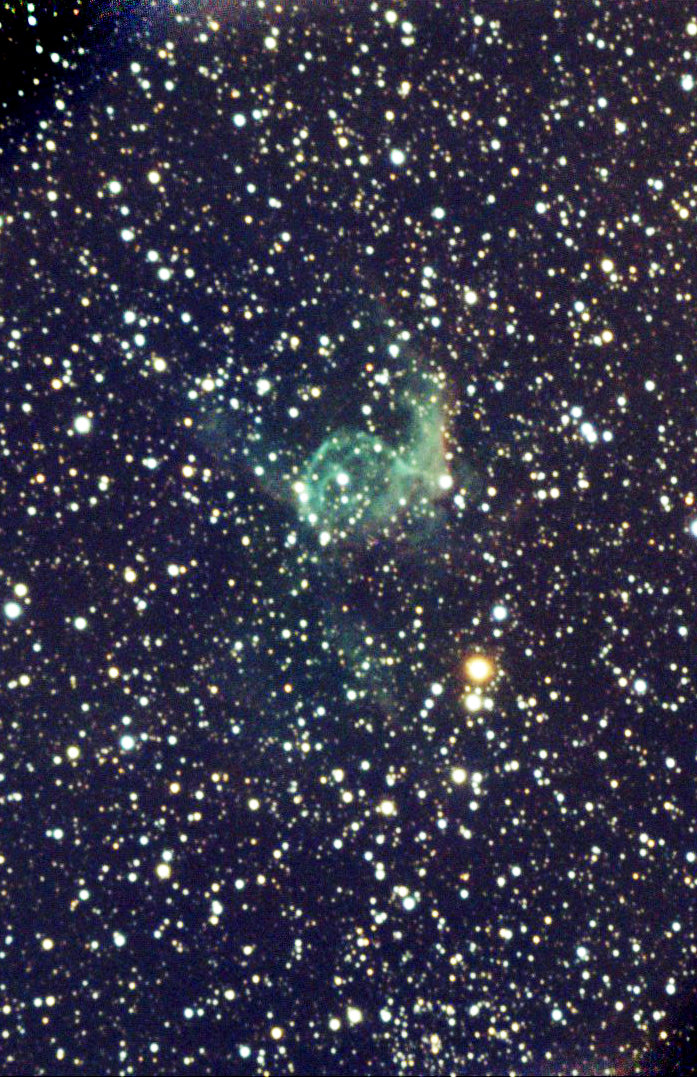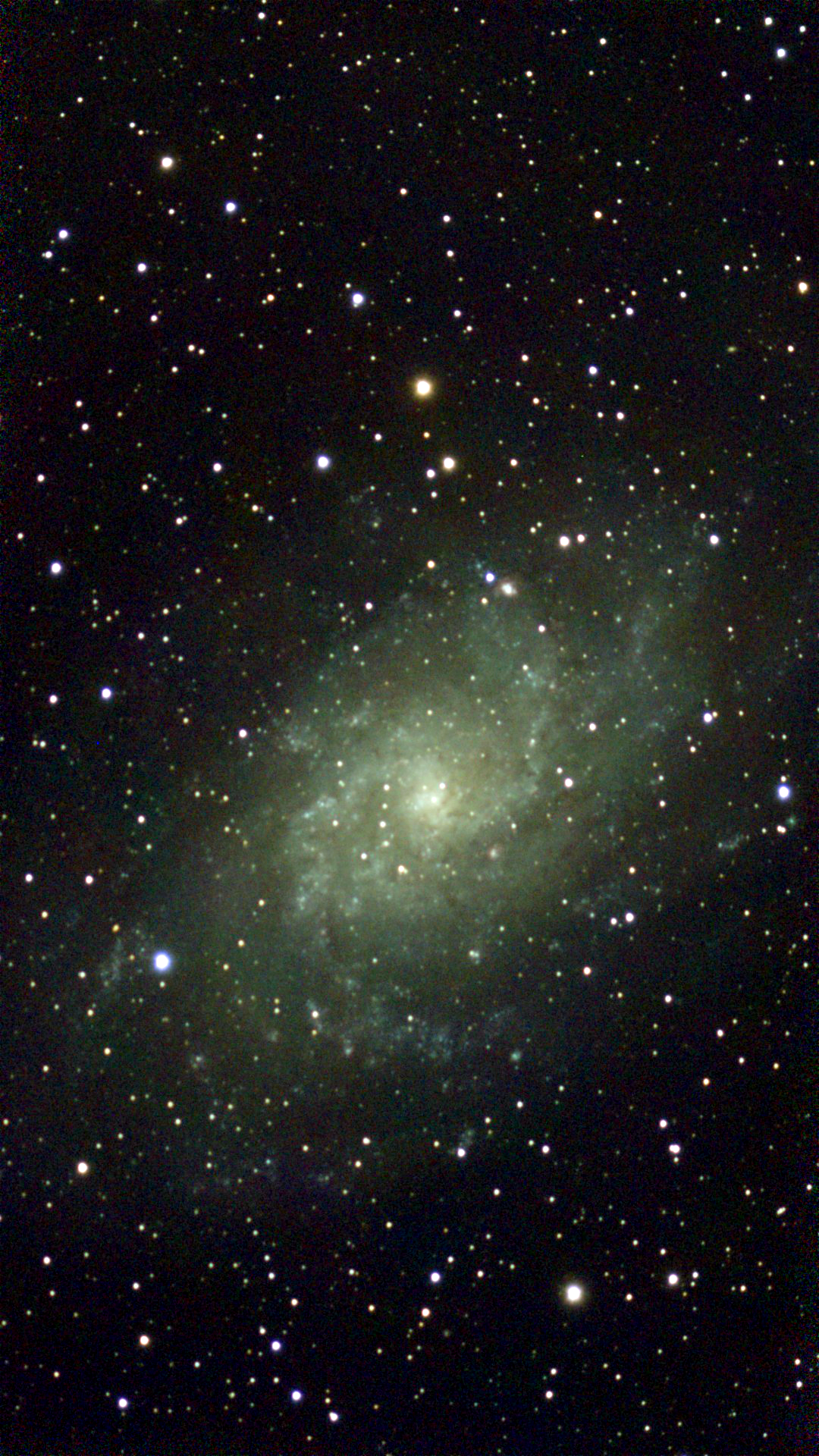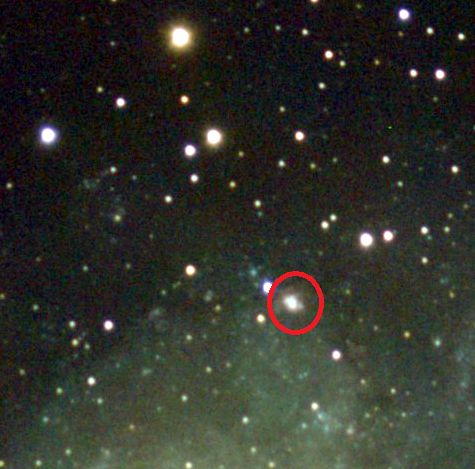𝐀𝐧𝐧𝐢𝐦𝐞 𝐖𝐨𝐧𝐠 on Nostr: Name: NGC 2359 - Thor's Helmet Constellation: Canis Major Did you know that sometimes ...
Name: NGC 2359 - Thor's Helmet
Constellation: Canis Major
Did you know that sometimes the gods place memes in the stars?
The naming process for astronomical objects is a mess. Comets always get named by it's discoverer, Asteroids get named by the discoverer. Planets have to be named after Roman gods. Dwarf planets after any gods. Everything else is a bit of a free for all and probably unofficial. It's hard to tell if it's been a long established name, or something people just agreed to use recently. So who called it Thor's Helmet? No idea, but there's nothing stopping me from calling it the Soyjak Nebula.
The Soyjak Nebula is an emission nebula, meaning that it's hot enough to become ionized and glow on it's own, vs a reflection nebula. But it's not an "either or" situation. In fact, much like naming, classification of nebula is also a bit of a mess.
Past that, the Soyjak Nebula is not all that special. The really interesting thing about the Soyjak Nebula is that it's generated (at least partially) by a Wolf–Rayet star.
Wolf–Rayets are extremely rare, only 500 are known in our galaxy of trillions of stars. In the whole Local Group (the cluster of galaxies we are in), an estimated 1000 are believed to exist. I'm not sure exactly why the Milky-way has so many more than the nearby and much larger Andromeda galaxy. Assuming it's not just because we've not done enough wolf hunting, this might mean the Milky-way has more star formation than Andromeda.
This is because Wolf–Rayets are the end stage of the largest O-type stars, the largest stars you can have on the Main Sequence. The largest star we know, the aptly named R136a1, is a Wolf-Rayet.
The Main Sequence is basically a "healthy at any size" diagram... except just like in real life, being slimmer is better. Fat O-type stars don't live very long because they burn through their hydrogen faster than you can burn through that Royal with Cheese and Coke. O-types live no more than a few million years, which is tiny compared to most stars, ( F, G, K-types can live for a few billion years, and the tiny M-types live on the order of trillions of years).
Wolf–Rayets have basically used up most of their hydrogen fuel, and are now actively fusing heavier elements. This can continue until it starts fusing Iron, which is the break even point for nuclear fusion. Once this happens, the star will begin to emit gamma ray in bursts, and soon collapse under it's own weight and become a type Ib or Ic supernova. This means that from that few million years life span of the O-type, Wolf–Rayets probably only have several thousand years left.
The fun things about these stars is that they're very unstable. They also emit mostly in the UV range, and are bright enough to start creating little bubbles of interstellar medium. This makes them very dynamic stars. Probably the most famous WR star candidate is in the Eta Carinae star system, visible only in the southern hemisphere, which went from a star of average brightness, to one of the brightest in the sky, and then dimmed after a massive eruption (now called the Homunculus Nebula) in the span of a few decades.



Constellation: Canis Major
Did you know that sometimes the gods place memes in the stars?
The naming process for astronomical objects is a mess. Comets always get named by it's discoverer, Asteroids get named by the discoverer. Planets have to be named after Roman gods. Dwarf planets after any gods. Everything else is a bit of a free for all and probably unofficial. It's hard to tell if it's been a long established name, or something people just agreed to use recently. So who called it Thor's Helmet? No idea, but there's nothing stopping me from calling it the Soyjak Nebula.
The Soyjak Nebula is an emission nebula, meaning that it's hot enough to become ionized and glow on it's own, vs a reflection nebula. But it's not an "either or" situation. In fact, much like naming, classification of nebula is also a bit of a mess.
Past that, the Soyjak Nebula is not all that special. The really interesting thing about the Soyjak Nebula is that it's generated (at least partially) by a Wolf–Rayet star.
Wolf–Rayets are extremely rare, only 500 are known in our galaxy of trillions of stars. In the whole Local Group (the cluster of galaxies we are in), an estimated 1000 are believed to exist. I'm not sure exactly why the Milky-way has so many more than the nearby and much larger Andromeda galaxy. Assuming it's not just because we've not done enough wolf hunting, this might mean the Milky-way has more star formation than Andromeda.
This is because Wolf–Rayets are the end stage of the largest O-type stars, the largest stars you can have on the Main Sequence. The largest star we know, the aptly named R136a1, is a Wolf-Rayet.
The Main Sequence is basically a "healthy at any size" diagram... except just like in real life, being slimmer is better. Fat O-type stars don't live very long because they burn through their hydrogen faster than you can burn through that Royal with Cheese and Coke. O-types live no more than a few million years, which is tiny compared to most stars, ( F, G, K-types can live for a few billion years, and the tiny M-types live on the order of trillions of years).
Wolf–Rayets have basically used up most of their hydrogen fuel, and are now actively fusing heavier elements. This can continue until it starts fusing Iron, which is the break even point for nuclear fusion. Once this happens, the star will begin to emit gamma ray in bursts, and soon collapse under it's own weight and become a type Ib or Ic supernova. This means that from that few million years life span of the O-type, Wolf–Rayets probably only have several thousand years left.
The fun things about these stars is that they're very unstable. They also emit mostly in the UV range, and are bright enough to start creating little bubbles of interstellar medium. This makes them very dynamic stars. Probably the most famous WR star candidate is in the Eta Carinae star system, visible only in the southern hemisphere, which went from a star of average brightness, to one of the brightest in the sky, and then dimmed after a massive eruption (now called the Homunculus Nebula) in the span of a few decades.
quoting note1eqp…eg9eName: M33 - The Triangulum Nebula
Constellation: The Triangulum
Ahhhh! I had meant to try and post an image of one object a week, but the last week and a half has been cloudy. Very annoying. But finally, I've got clear skies!
Anyway...
The Triangulum Nebula is one of the big three "neat" objects exclusive to the Northern Hemisphere. Unfortunately, the Southern Hemisphere has, like, a dozen, so I don't imagine they're too disappointed. Straya bros stay winning.
M33 has the honor of being the furthest thing you can see with the naked eye. Actually, it's in a bit of a tie with one other object (which I'll get to later). Really it depends on how dark it is where you're at. If it's advanced darkness (Bortle 3 or lower) You can easily see M33, meaning you're looking at something over 3 million light years away. It's quite obvious too, as it looks to be around the size as the full moon.
We don't really know who "discovered" M33, since it is visible to the naked eye. The problem is, no one seemed to write it down. The first record we have of it comes from an Italian guy in the mid 1600's, and the first official account was made by Charles Messier in the mid 1700's. William Herschel did a more in-depth study of the object, and found a region now called NGC 604, a massive star forming region and the largest and brightest known nebula in the Local Group. I circled the nebula in red. Were it in our galaxy, it would be brighter than the full moon. It makes me wonder what life on planets near it would be like. What would their views of the night sky be like?
Anyway, you may notice that I called NGC 604 a nebula, when I also called M33 the "Triangulum Nebula". That's because the discovery of M33 predated the discovery that it was actually a Galaxy. While it is now commonly called "The Triangulum Galaxy", the old name "Triangulum Nebula" is a carry over that many still insist on for historical sake.
A surprising fact about galaxies is that they are a fairly recent discovery. Actually, the "proof" that these objects are galaxies has been known for less than 100 years (actually it will be exactly 100 years this November). Edwin Hubble used data from this galaxy as part of his paper which finally put the debate to rest, though there were rumblings before that. The first to propose that this might be the case was Immanuel Kant in the 1700's, but it was largely ignored by most astronomers at the time, though the existence of nebula within nebula, like NGC 604, were good circumstantial evidence that these objects were far larger than anything else we'd seen up to that point.
In about 2 billion years, this galaxy might crash into the Milky-way. Might, because we don't know. We do know for a fact that the Milky-way will crash into another, much larger, galaxy, but M33 is a bit of a mystery. M33 might crash into us first, or it might miss us, or it might even become a moon to our galaxy.
I'll up date this when it happens, to let you know how it all plays out.
note1j5f…dn7r





